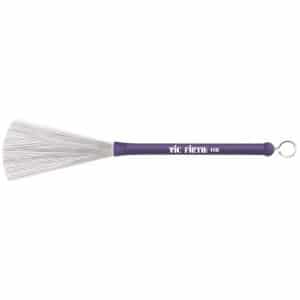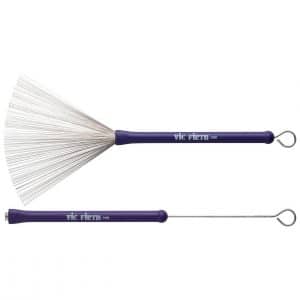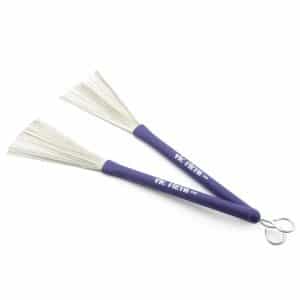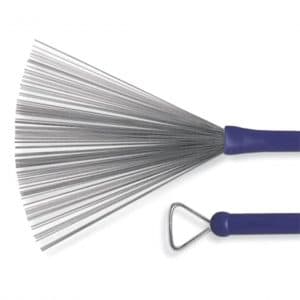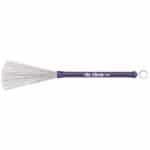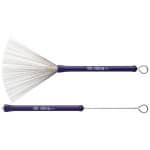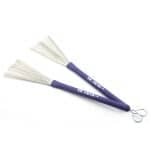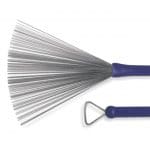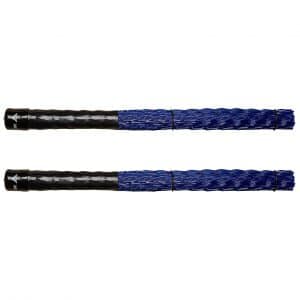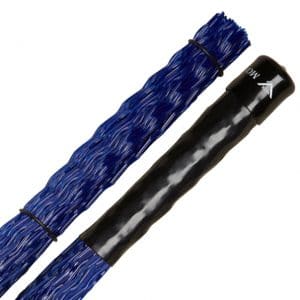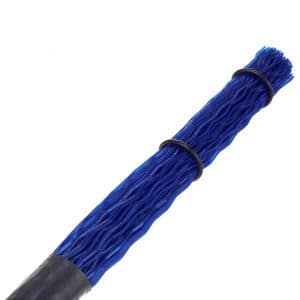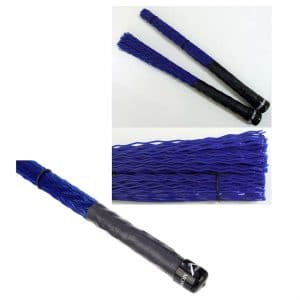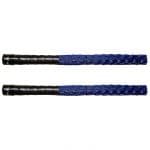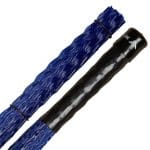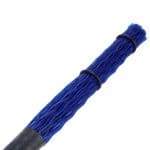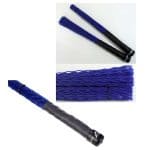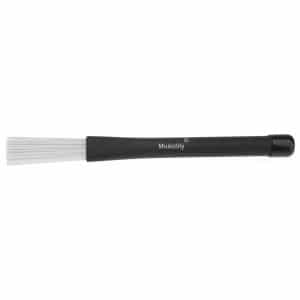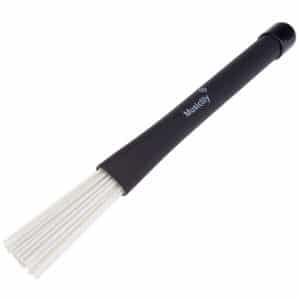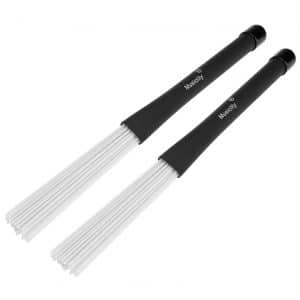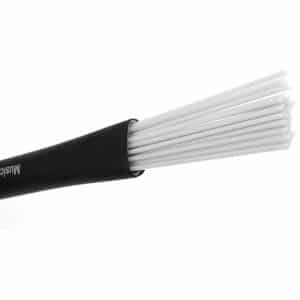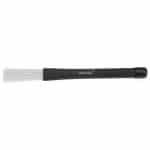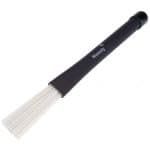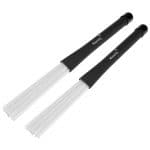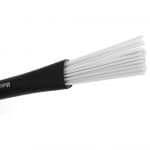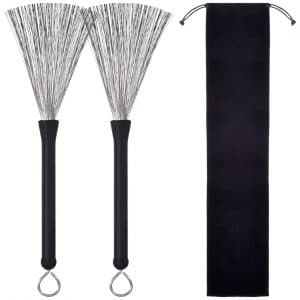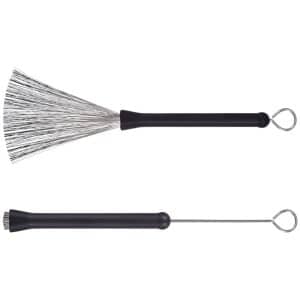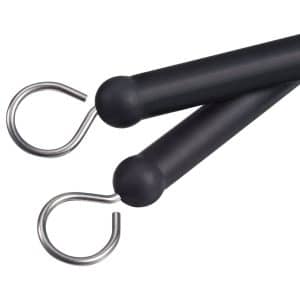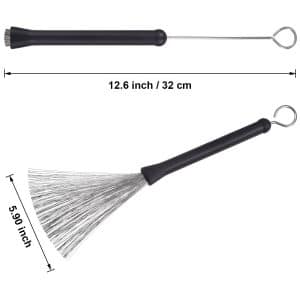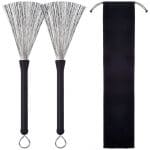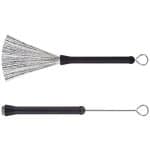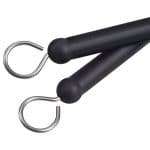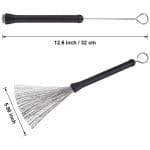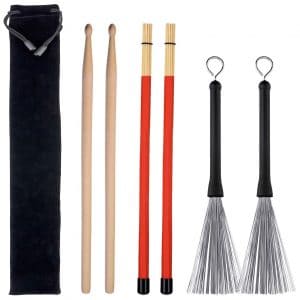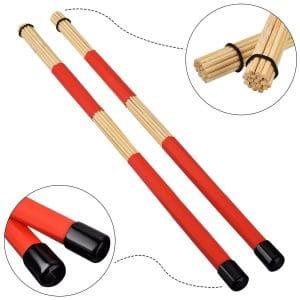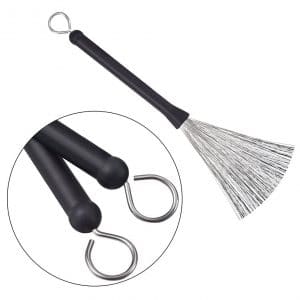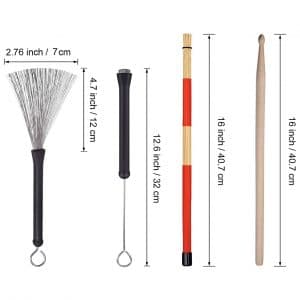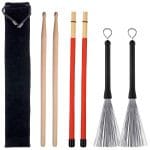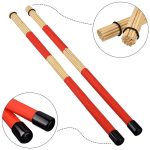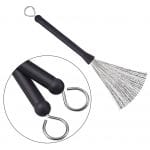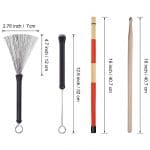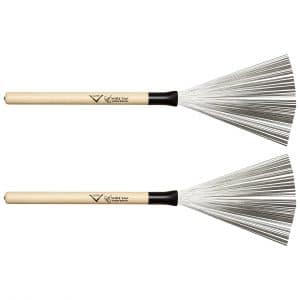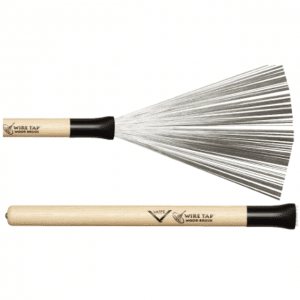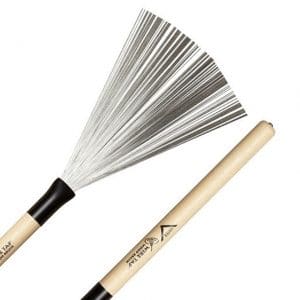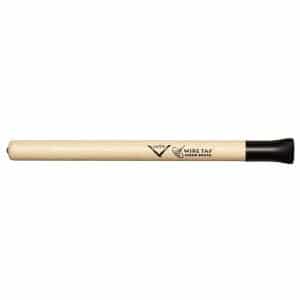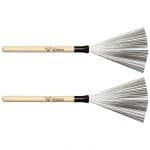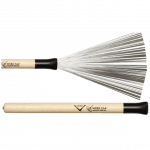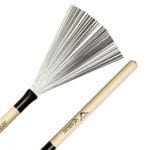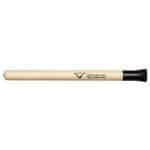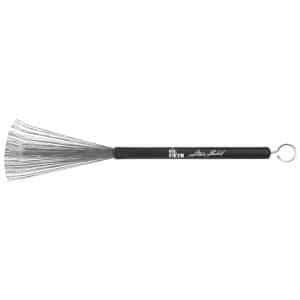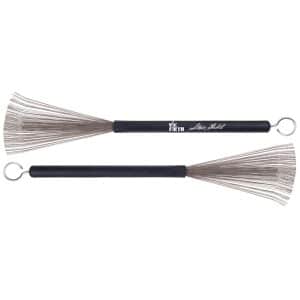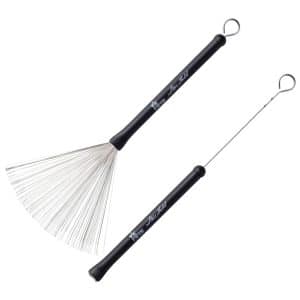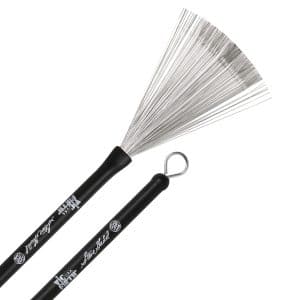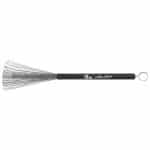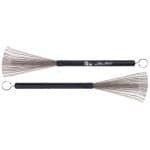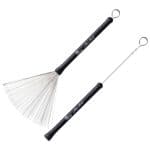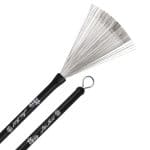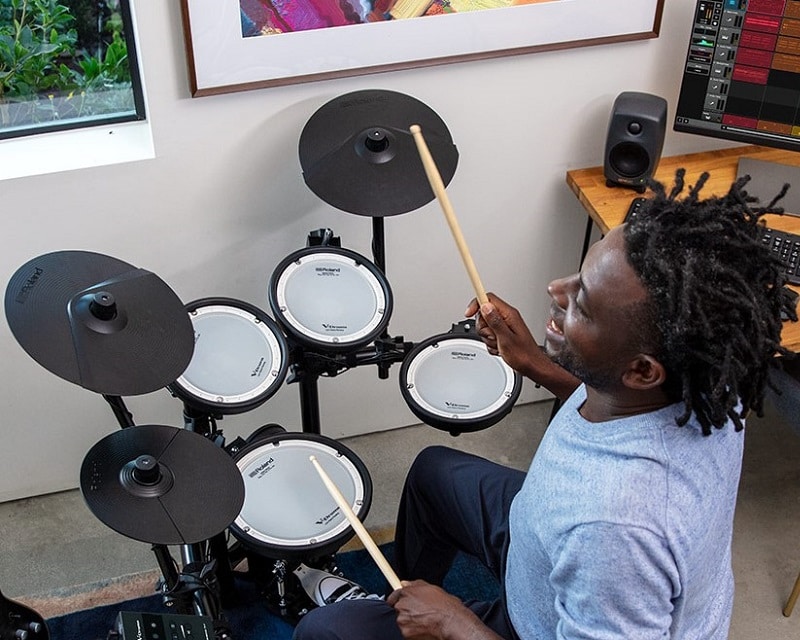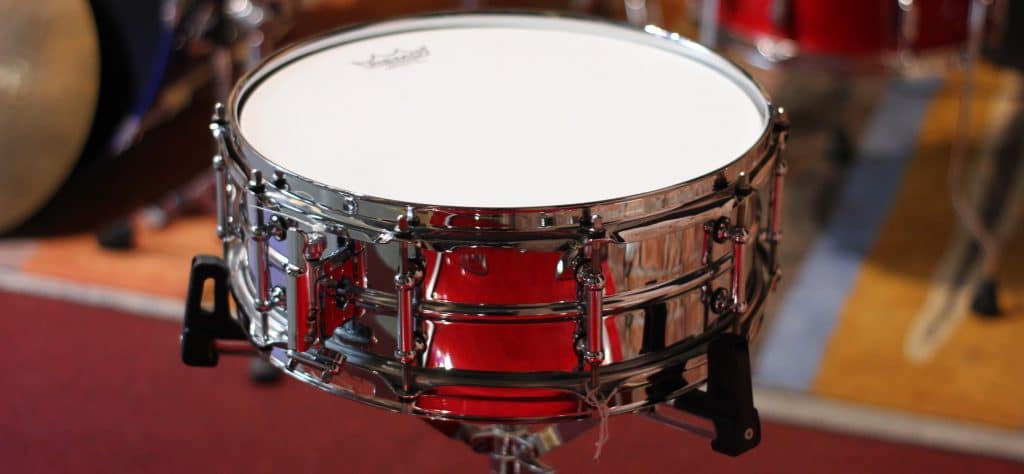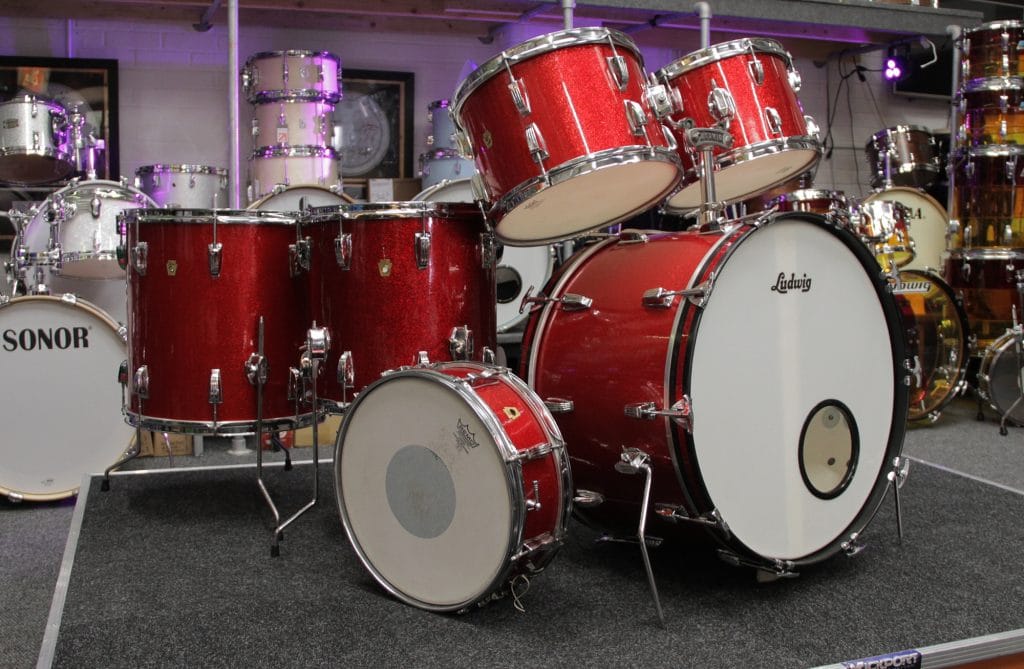Features to consider when choosing drum brushes
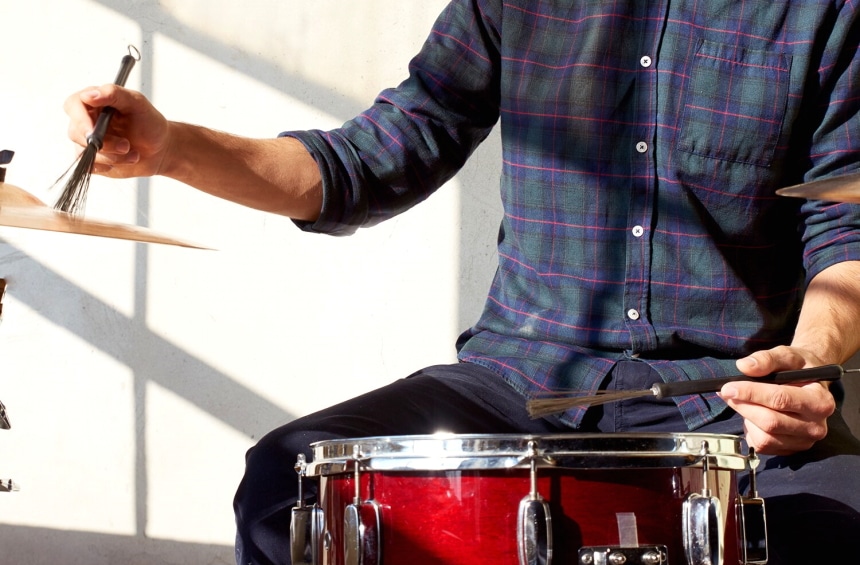
The following features are those to consider when making your choice. Obviously, different people will have some different priorities when it comes to brushes and may make a choice based on specific needs and the drum kit they will be playing or even based on genre. Whether you are a newcomer or an established player can also make an impact.
A full understanding of these features will help you understand which to buy. So which features have we used to review the very best drum brushes on the market?
Retractable vs fixed
A retractable brush comes with a rod at the back, as you can see by the Vic Firth Heritage Brush, which is connected to the wires, and you can use these to change the character of the wire, such as how much is hitting the drum, and how close together all the wires are. Different drummers will prefer different styles, and different songs may even call for different configurations.
Fixed brushes don’t allow you to alter how much of the brush is hitting the drum head or the other aspects of the sound, and character of the wires.
However, fixed do have the benefit of the brush not being constantly moved and needing to be stored more carefully. So a fixed brush can be a good choice if you are worried about damaging the wires. You simply have to make sure that you give them full protection.
Wires
As you’ve probably guessed, the wires are possibly the most important thing to consider when you are buying drum brushes. You must get a set of high-quality wires that is high-quality enough to last a long time, but the key is that they sound good. The wires of your brush greatly impact the ultimate sound you are producing.
Traditionally, metal wires are the most common. They provide a bright sound and give a really clear “swish” when you remove them or run them along the drum head. The metal wires can be abrasive, and the head might get caught in the drum. This can cause damage. If you want to avoid this problem, you can go for the
Vic Firth Steve Gadd Wire Brush, which is angled to avoid this problem.
Brushes with nylon or other materials are starting to become more common. These materials can be made more cheaply, and some people can recognize a plastic “sound” to them. Some elitists may say these aren’t really proper drum brushes, but we don’t think this is the case. One benefit is that they will also spring back into their shape a lot more readily than metal, especially if hit hard on the drum.
Handle
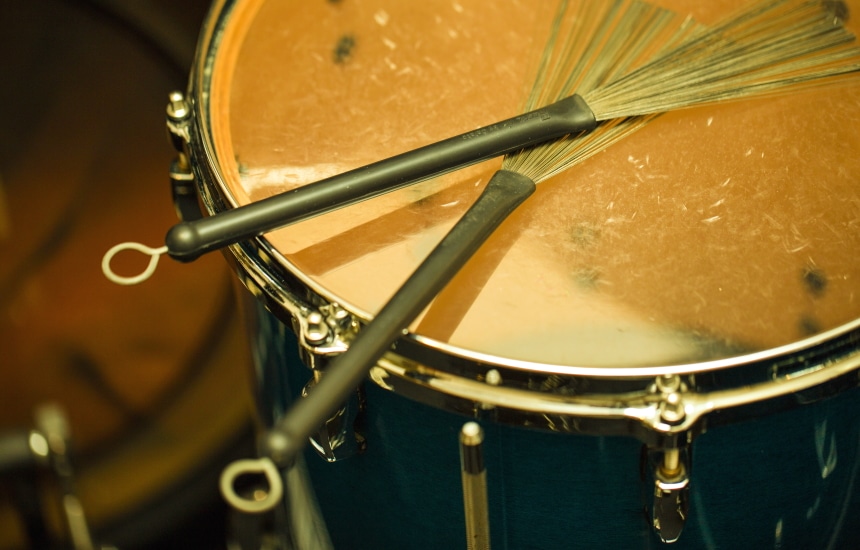
There are a couple of different considerations when it comes to the handle.
It does make some difference to the way the drums sound. This may not be drastic, but if you are planning on recording you will need to get your drum sound perfected and make sure that the tone has the characteristics you are looking for. A wooden handle is common, as by the Vic Firth Heritage Brush, but it makes a different sound to other materials, including plastic, rubber, and aluminum. Rubber and wood are the most common. Rubber handles are softer, they grip and have a good bounce back but feel very different from wood sticks you might be used to.
The other important consideration is the way the drums feel. Ask any drummer, and they will tell you that different drumsticks feel very different and greatly impact how they play. Some drummers get to the stage where they are only willing to play one specific stick type.
This is another area of music equipment where people like to have an opinion, but nobody should tell you what is right for you. It is a personal choice what sort of handle you prefer. If you are used to wooden sticks then a wooden handle might be the easiest transition, but metal or rubber may give different intonation.
Weight
The weight of the drum brushes is to do with how they are played, and some people prefer a really light brush, which might be easier for doing some drumwork, however it really depends on what you are used to and what you prefer. The Vater Drum and Percussion Brushes are the lightest on our list. Some people love the fact that they are lightweight, but realistically, none of the drum brushes are heavy. It isn’t a storage issue or a portability issue, just a preference when it comes to how you like to play the drums.
Dimensions
There are some standardized sizings for drum sticks, but these really don’t apply here as the brushes are different shapes and sizes. Look at the Vater Drum and Percussion Brushes (VBM), these are a lot bigger than many drum sticks at 14 inches in total. It depends what you are looking for. The Vater Drum and Percussion Brushes (VBM) are best used with percussion or even marching drums, so for a standard drum set you may want something with a more traditional design.
The drum stick set that we’ve mentioned, the M Y Fly Young Set, includes a standard sized 5A drumstick set as well as the brushes, so you can work out what size is best for you, as well as which texture will give the audio quality you are hoping for.
Warranty
When you think about it, buying drum brushes and sticks is just buying something to hit stuff with! It’s unlikely that you will get any sort of warranty on sticks or brushes, and if you do, it might just be 28 days, one month, or 60 days.
It’s fair enough, though drum sticks are not totally disposable, and drum brushes should last a little bit longer, they aren’t designed to last forever and, at some point, will have to be replaced. A drum company offering years worth of warranty on brushes would probably never make any money.
Some drummers using sticks can go through multiple sets in one gig or recording session, so you can see why warranties are uncommon.
Extra features
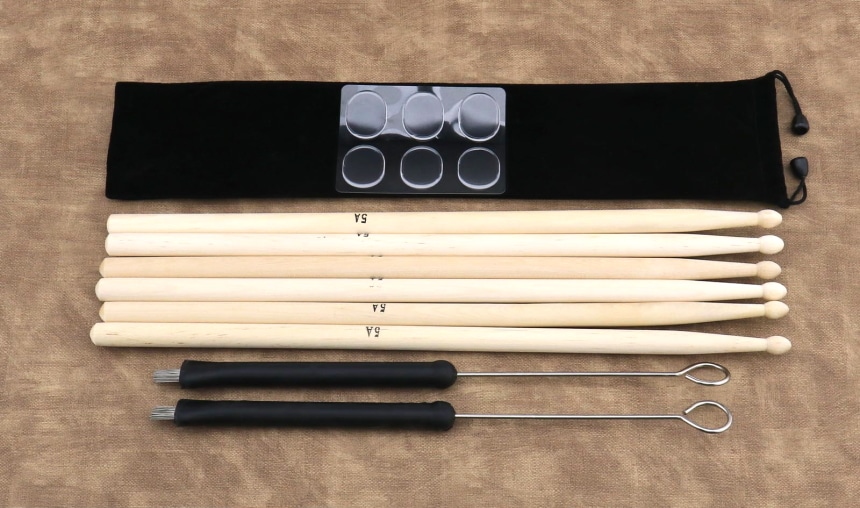
There are not many extra features that can be incorporated, but we have discussed some drum brushes that try to add something a little different. The Vic Firth model that utilizes the metal angle, the Steve Gadd Wire Brush signature series is designed to stop the issues that abrasive metal can otherwise give and protect the coating of your drums.
Some of the drum sticks with brush models or drum brushes include a case for you to carry them around in. For example, the M Y Fly Young Set has a drawstring velvet case. This is not the most amazing additional feature we’ve ever seen, but having this extra bit of protection is good when you need to buy a drum brush.
Drum brushes, drumheads, and music types
In the history of music, drum brushes are a relatively new concept. Many people think that people started using brushes to get a new and exciting sound in the 1900s, and jazz musicians of the 20s and 30s are often credited with the new and interesting drumming styles.
Jazz is not the only genre that drum brushes are amazing for, and they can work very well with traditional jazz drum patterns, but also R’n’B, Rock, and some Salsa and Latin music.
There is quite a famous book entitled “The Sound of Brushes” by Ed Thigpen, which has become known as one of the best resources for those looking to learn more about drum brushes and their use. Ed has a musical background and the book is designed to help drummers learn how to play the drums and the slightly different counting and notation methods needed for drumming in this way.
Any type of music that can benefit from softer playing methods can be a great candidate for drum brushes. Drummers can use these to soften the patterns they ordinarily play. For instance, if you are looking to play a stripped-down acoustic set, a drummer using a brush could be a good way to reduce the volume of the drums so that they don’t overpower, and this softer sound is a good accompaniment for a lot of acoustic styles and genres.
Rather than providing drum “hits” like a drumstick, a drum brush, also known as a drum broom, is used to sweep across the drums. This means the notation is totally different. Also, drum brushes are used a lot on certain drums, such as cymbals, whereas other drums such as closed hi hats probably won’t sound good if used with brushes. Cymbals give a beautiful fizz and a swooshing sound as all of the brushes and brush strokes gradually work their way across the metal.
Though there are certain techniques and notation methods you can learn to play the drums with brushes, the key is that they provide you with another tool to experiment and create your own unique sound. Whether you are playing swing, jazz, rock or accompanying a singer-songwriter.






